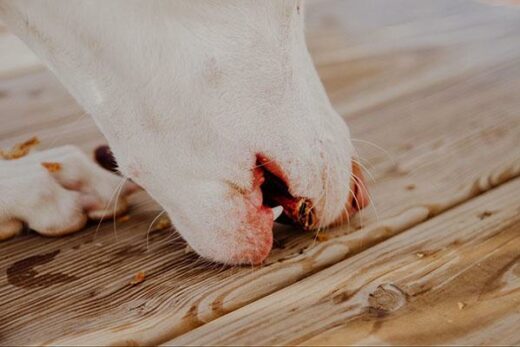Oral melanoma is one of the many kinds of cancer that dogs can contract at any given point in their lives. Sometimes, it arises by chance. Other times, the cutaneous melanoma (cancer that starts in skin cells that produce pigment) stems from overexposure to radiation.
It’s important to understand what oral melanoma is, how to identify it, and ways to treat cancer. A diagnosis is scary, but learning about cancer is better than staying in the dark and fearing the unknown. Without further ado, let’s learn about oral melanoma.
What is Oral Melanoma in Dogs?
As a pet owner, the number one goal in raising our dogs is to keep them as healthy as possible for as long as possible. There are so many preventative measures that we can take to improve our pet’s quality of life, but sometimes, no matter how proactive you are, nature takes its course and inflicts an illness that seems to come out of nowhere.
One of the most detrimental diseases that dogs face is cancer. Malignant melanomas, or skin cancers, are a very common type of cancer in dogs. Today, we’re going to be talking about a type of canine cancer known as oral cutaneous melanoma. As you can guess, this is a form of skin cancer within the mouth.
Denoted most obviously by tumors in the oral cavity of dogs, canine oral melanoma is the type of cancerous primary tumor cells that impacts the highest percentage of dogs. In fact, not only are all dogs more likely to get oral melanoma than some other forms of cancer, but male dogs are at an even higher risk of encountering the disease at some point in their lives.
Cancerous tumors and oral melanoma are more likely to occur in older dogs. For male dogs, the typical age at which they are diagnosed is around eleven years of age.
It’s very uncommon for puppies and middle-aged dogs to have melanoma of the oral cavity, though it’s still important to be aware of the symptoms of the condition just in case. Speaking of oral melanoma symptoms in dogs, what are some of the signs that your dog might have this disease? We’ll discuss that below.
Symptoms and Side Effects
One of the most visible signs of this condition is weight loss. But before the weight loss is obvious, dogs will lose their appetite and eat very rarely, if ever, which of course leads to losing weight over time.
Since this cancer is located within the mouth of your dog, it naturally affects your dog’s appetite, hunger, and willingness to eat despite those two variables. Oral melanoma can be painful, which makes eating a lot less appetizing… Literally.
Other side effects that can appear include…
- Swelling of the facial features
- Inflammation of the gums
- Odd-smelling breath and smells coming from the mouth
- Signs of pain and discomfort
- Drooling or increase in saliva production
- Difficulty using facial muscles
- Hard time swallowing or drinking water
How to Treat Oral Tumor Melanoma in Dogs
There are four main treatment options, including…
- Surgical excision
- Chemotherapy
- Radiation therapy
- Non-steroidal anti-inflammatory drugs
Surgical Removal of Oral Melanoma Cancer Cells
The number one treatment option for dogs with oral melanomas is surgical removal of the tumors. Surgically removing a tumor eliminates the source of the problem. Sometimes, surgical excision is only half the battle, though.
This is especially true in situations where a dog’s cancer has already metastasized because it means the cancerous cells have traveled to other body parts. Sadly, oral melanoma is always a metastatic disease, meaning that it quickly spreads to create new tumors throughout the body, especially if it reaches the lymph nodes.
Canine cancer specialists will likely perform a CT scan to figure out the precise location of your dog’s oral tumor. The CT scan will also help the specialists understand if there is only one concerning lump or multiple oral tumors.
Removing the cancerous cells is helpful but it doesn’t eradicate all of the cancer because it is a metastatic disease – at this point, it has already moved to other parts of the body by way of the local lymph nodes. When cancer metastasizes, it often invades surrounding local lymph nodes, which then naturally move to other internal systems and organs, spreading the cancerous cells as they go.
When surgical removal of the tumor cells does not reach the goal of remission, specialists can choose to order chemotherapy treatment if they think this will increase the dog’s chance of survival. Chemotherapy is a very intense process that utilizes incredibly aggressive drugs to kill the cancer cells.





